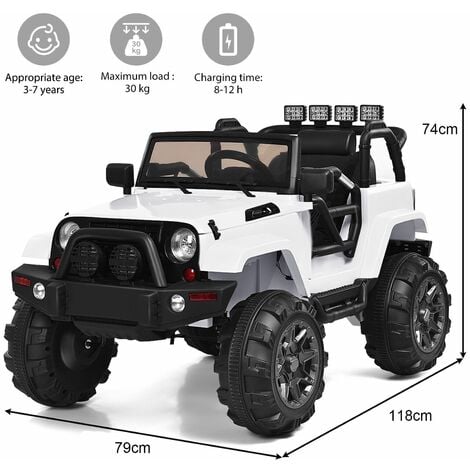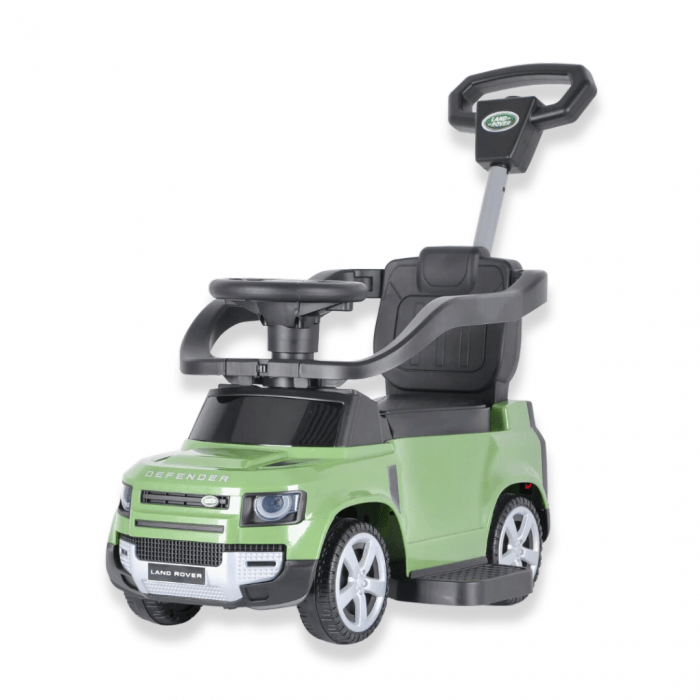Be aware of the child's age, size and stage of development when looking at ride-on vehicles for kids. This is to be sure that they will be safe and enjoy themselves. What factors should be considered when evaluating these aspects - Age
Younger Toddlers (1 to 3 years old) Choose ride-on vehicles specially created for children of this age. These cars are usually low to the ground, with simple controls and features such as steering wheels or buttons. Select cars that ride on wide bases for stability.
Children who are older (3plus years) If your child gets older and more experienced, they will be able operate more advanced vehicles with additional features and controls. Think about cars that have adjustable seats as well as larger capacity for weight. Also, look for interactive features like working lights, sounds and music. Look for ride-ons that permit you to adjust the speed settings or parental controls in order to ensure safety and be able to accommodate different levels of skill.
Size
Height and Weight When choosing a car to take your child in, it is important to take into account their height and weight. Pick a car that has a seat height and weight capacity that can comfortably accommodate your child's size. Avoid cars that are too small or too big, as they may be unsafe or uncomfortable for your child to ride.
Comfort and legroom Ensure that the car has enough space and legroom to allow your child to comfortably sit. The dimensions of the seating space should be appropriate for the size and height of your child.
The Developmental Stage
Motor Skills- Take into consideration your child's abilities in terms of motor skills, coordination, and balance when choosing a car. While toddlers of a younger age will require more control to operate the vehicle, older children are able to manage more complex controls as well as interactive features.
Confidence and Independence- Ride-on vehicles can help build confidence and independence in children by teaching them to manage their car and navigate. Choose a car that allows your child to learn steering as well as acceleration and braking independently, building their motor skills and confidence over time.
Consider your child's interest and interest when choosing the right ride-on car. Select a car with characteristics, themes, or colors that appeal for your child. It could be a classic or sporty vehicle or truck.
By taking into consideration your child's age as well as their height and developmental stage, you'll be able choose an appropriate, safe ride-on that your child will enjoy and learn from. Read the best electric kids cars for more advice including electric toy car, two seater childrens electric cars, childs electric ride on car, ride on toy, toy the car, a toy car, toy car toy car, riding digger, childrens ride on, digger ride and more. .

What Are The Features Available On The Ride-On Cars?
Ride-ons come with various features and accessories which make them more realistic. They can also provide children with a fun driving experience. These are some common features and accessories available on ride-ons:
Many cars that ride on have working headlights to illuminate the road ahead. This increases visibility and realism, especially in areas with poor illumination or at night.
Horn Sounds
Children can pretend to drive an actual vehicle using a steering knob or the Horn.
MP3 player compatibility
Some ride-ons are compatible with MP3 devices which allows your child to connect a audio device through USB or an auxiliary port. You can play your favorite songs while driving, increasing the fun factor of the ride-on car.
Realistic Engine Noises -
Ride-ons can have built-in sound effects that mimic real-life sounds such as engine sounds, revving or acceleration. It can cause children to feel like they're driving an actual car.
Remote Control -
Certain ride-on cars are with a parental control, that allows parents to control the vehicle remotely and supervise or assist as required. Parents can manage the speed of the car or steer it, as well as stop it remotely. They'll have peace of assurance.
Seat Belts -
Some ride-on cars come with safety straps or seat belts to secure your child. This adds an additional layer of safety, and helps prevent children from falling while playing.
Working Doors
A variety of ride-on cars feature doors with a functional design, which can be easily opened and closed. They allow children to enter or exit the vehicle swiftly and with ease.
Storage Compartment
Certain ride-on vehicles come with the option of a trunk or storage compartment where children can store small toys, snacks, or other things, adding convenience and flexibility to the playing experience.
Adjustable Seats -
Certain ride-on vehicles have adjustable seats that can be shifted either forward or backwards to accommodate children of various heights, or give them more legroom as they increase in height.
Remote Emergency Stop Button
Alongside the remote control, certain ride-on cars also come with the emergency stop button controlled remotely. Parents can use this feature to stop their car in case of emergency or danger.
These features and accessories contribute to the overall fun as well as the realism and safety of ride-on cars, allowing children to engage in imaginative play and engage in thrilling adventures in their own vehicle. See the most popular JCB ride on toys for more info including remote control childrens electric cars, kiddies cars, toy car toy car, electric rideons, car electric ride on, 2 seater electric cars, childrens electric cars, toy ride, toy car, kiddies cars and more. .

What Are The Possibilities For Remote-Controlled Childrens Vehicles? What Are Their Advantages And Disadvantages?
Remote control kids' cars are also known as RCs or remote controlled cars. They come in a variety of designs, prices and sizes to meet every budget and preference. This article will provide a summary of the pros, cons, and the sizes of remote-controlled children's cars.
Electric RC Cars – These are remote-controlled, battery-powered cars which can be used indoors and out. They are available in a range of designs such as buggies, trucks or sports cars.
Nitro RC Cars – Gas-powered remote controlled cars with higher performance and speeds however, more expertise and maintenance is required in order to operate. Electric RC cars are smaller and are less costly.
Scale Models: Remotely controlled replicas of real-life vehicles such as cars, planes, trucks, and boats. Scale models are available in various scales, from 1-10 to 1-24. The larger scales have greater detail and realism.
Sizes -
Remote control children's cars come in various sizes, ranging from tiny miniature models to huge-scale replicas. Size can affect the performance of a vehicle, its speed, and the handling characteristics.
Micro-sized cars are small and light. This makes them ideal to use indoors with smaller children. Larger-scale models are more robust and durable, which makes them perfect for off-road racing as well as outdoor racing.
Prices
Prices for remote-controlled children's cars will vary based on the specifications, quality, and brand.
Micro-sized electric RC cars can be priced between $20 and $100, while larger-scale nitro and electric RC vehicles can cost between $100 and $500 or more.
Scale models, premium hobby RCs can cost anywhere from a few hundred dollars up to a whopping $1,000, depending on the detail level and the performance.
Pros & Cons
Pros -
Entertainment - Remote control children's vehicles provide hours of entertainment and excitement for both adults and children.
Skills Development: Operating an RC vehicle aids in the development of hand-eye coordination, spatial awareness and problem-solving skills.
Social Interaction: RC vehicles are ideal for social interactions with friends and family.
Customization – A lot of RC cars can be customized using aftermarket modifications, parts and accessories that boost performance and aesthetics.
Cons -
Costs - A premium model that comes with the latest features could cost a lot, particularly for hobby grade models.
Learning Curve - Operating an RC vehicle requires practice and skills, and young children might struggle with the controls initially.
Maintenance is essential for car owners who own RC vehicles. They must regularly clean or lubricate their vehicles, as well as make repairs or replace parts.
Safety concerns RC cars are a safety danger, and could cause electrical hazards, accidents and falls when used without supervision of an adult.
Remote control cars for children can be a fantastic educational and fun experience. However, it's crucial to select the appropriate model based on the factors of dimensions, safety, cost and features. Hobby-grade RC vehicles may be better suited to older children or enthusiasts. The simpler models are ideal for younger kids and beginners. Read the recommended Lamborghini ride on car kidscars.co.uk news for website advice including kidscars, remote control childrens electric cars, toy with car, a toy car, race car toy car, toy car toy car, toy cars toy car, lambo toy car, car electric ride on, toy and car and more. .
